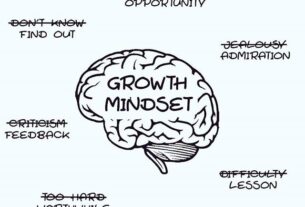Emotions are a cornerstone of the human experience, intricately woven into every aspect of our lives. They shape how we perceive the world, influence our decisions, and guide our interactions with others. Despite their pervasive presence, the underlying science of emotions—the way they are processed in the brain and how they affect our body and mind—is often complex and multifaceted. Understanding these mechanisms is crucial for gaining insight into how emotions impact our mental and physical health, relationships, and daily functioning.
By exploring the science behind emotions, we can uncover how they are regulated by various brain structures and biochemical processes. This knowledge not only helps us appreciate the profound effects emotions have on our lives but also offers practical strategies for managing them more effectively. Whether it’s through improving emotional resilience, enhancing communication, or making more balanced decisions, understanding the science of emotions empowers us to lead more fulfilling and healthier lives. This article will delve into the intricate workings of emotions and their influence on our well-being, providing a comprehensive view of how feelings shape our experiences.
(pickpik.com)
What Are Emotions?
Emotions are complex psychological states that encompass a range of physiological, subjective, and behavioral components. They are fundamental to the human experience, influencing our interactions with the world, our decisions, and our overall well-being. Emotions arise in response to internal or external stimuli, such as personal experiences, social interactions, or environmental factors. These emotional responses can vary widely, from positive emotions like joy, love, and contentment to negative emotions such as anger, sadness, and fear. Each emotion plays a crucial role in shaping our thoughts, actions, and overall approach to life.
The ability to recognize and understand these emotional responses is vital for personal growth and social functioning. Emotions not only affect how we perceive and react to situations but also how we connect with others and navigate our environment. They serve as internal signals that can guide our behavior, inform decision-making, and help us manage interpersonal relationships. By exploring and understanding the nature of emotions, we can better appreciate their impact on our daily lives and enhance our emotional intelligence.
(Physiological Arousal)
Physiological arousal refers to the bodily changes that occur in response to emotional experiences. These changes are regulated by the autonomic nervous system, which manages involuntary bodily functions. When we experience an emotion, our body responds with various physiological alterations. For instance, emotions such as excitement or fear can cause an increased heart rate, preparing the body for immediate action. Similarly, stress or anxiety might lead to heightened sweating as part of the body’s fight-or-flight response.
Additionally, emotional states can affect breathing patterns, such as shallow breaths during moments of anxiety or rapid breathing during periods of exhilaration. Hormonal changes also play a significant role in this process; the release of hormones like adrenaline and cortisol influences both mood and physical responses to emotional stimuli. These physiological changes help the body cope with perceived threats or rewards and play a critical role in shaping our reactions and behaviors in various situations.
(Subjective Experience)
Subjective experience refers to the personal, internal perception of how we feel. This aspect of emotion involves individual interpretation, where the way we perceive and label our emotions can vary significantly from person to person. For example, the same event might be experienced as exciting by one individual and as threatening by another. This variation in perception highlights the personal nature of emotional experiences and how they are shaped by individual differences and past experiences.
Emotional intensity further influences how we experience and express our feelings. Emotions can range from mild contentment to intense joy or despair, affecting our overall emotional landscape. Emotional awareness, or the ability to recognize and understand our own emotional states, is crucial for effective emotional regulation and self-awareness. By becoming more attuned to our emotional experiences, we can better manage our reactions and improve our interactions with others.
(Behavioral Responses)
Behavioral responses are the outward actions or reactions triggered by emotions. These responses manifest in various forms, including facial expressions, body language, and verbal communication. For example, emotions often result in specific facial expressions, such as smiling when happy or frowning when upset. These expressions can be somewhat universal, though they may also vary across different cultures and contexts.
Body language is another important aspect of behavioral responses; how we carry ourselves can change based on our emotional state. A person might appear more confident and stand upright when feeling positive, whereas they may slouch or appear withdrawn when feeling sad. Emotions also influence verbal expressions, including tone, volume, and content of speech. For instance, anger may lead to raised voices and aggressive language, while happiness might result in cheerful and enthusiastic communication. Additionally, emotions drive specific actions, such as avoidance behaviors driven by fear or nurturing actions inspired by love and affection. These behavioral responses are crucial for expressing and managing emotions and play a significant role in social interactions and relationships.
(Summary)
Understanding the components of emotions—physiological arousal, subjective experience, and behavioral responses—provides a comprehensive view of how emotions function and impact our lives. Emotions are complex states that integrate bodily changes, personal perceptions, and observable behaviors, influencing various aspects of our daily experiences. By recognizing and analyzing these components, we gain a deeper understanding of our emotional responses and their effects on our behavior and interactions with others.
By exploring the interplay between these emotional components, we can enhance our emotional intelligence and improve our ability to manage and respond to different emotional states. This understanding can lead to better emotional regulation, healthier relationships, and overall well-being, contributing to a more fulfilling and balanced life experience.
The Neuroscience of Emotions
Emotions are intricately processed in various regions of the brain, each contributing to how we experience, regulate, and respond to feelings. Understanding the neuroscience behind emotions helps elucidate the complex interplay between brain structures, neurotransmitters, and hormones. These interactions are fundamental to how we interpret emotional stimuli, manage our emotional responses, and navigate our daily lives. By exploring the roles of different brain regions and chemical agents, we can gain deeper insights into the nature of emotional experiences and their effects on our behavior.
The brain’s capacity to manage and modulate emotions involves sophisticated neural networks and biochemical processes. This complex system ensures that emotions influence our decisions, actions, and overall mental health. Insights into these processes not only enhance our understanding of emotional regulation but also inform therapeutic approaches for managing emotional disorders and improving mental well-being.
(The Limbic System)
The limbic system is a crucial set of interconnected structures located in the brain’s medial region, essential for the processing and regulation of emotions. Key components of the limbic system include the amygdala, hippocampus, and hypothalamus. The amygdala is a critical structure involved in processing emotional responses, particularly those related to fear, pleasure, and survival. It helps detect and react to emotionally significant stimuli, such as threats or rewards. The amygdala also plays a role in the formation of emotional memories, influencing how we recall and react to past experiences.
The hippocampus, another key component, is primarily known for its role in forming and retrieving memories, including those with emotional content. It helps contextualize emotional experiences by linking them with past memories and knowledge, which in turn affects how we process current emotional stimuli. Meanwhile, the hypothalamus regulates physiological responses to emotions, such as changes in heart rate, blood pressure, and hormone levels. It plays a crucial role in the body’s stress response by controlling the release of stress hormones like cortisol and adrenaline, thereby influencing our emotional and physical reactions.
(The Prefrontal Cortex)
The prefrontal cortex, located at the front of the brain, is responsible for higher-order cognitive functions and plays a significant role in emotional regulation and decision-making. This area helps modulate emotional responses by assessing the relevance and appropriateness of emotional stimuli. It allows us to control and adjust our emotional reactions based on social norms and situational context. The prefrontal cortex integrates information from various brain regions, including the amygdala, to guide decisions that align with long-term goals and values.
Additionally, the prefrontal cortex supports self-control and impulse regulation. This enables us to manage emotional responses and avoid actions driven purely by immediate feelings. By facilitating higher-order thinking and planning, the prefrontal cortex helps balance emotional and rational considerations, contributing to more thoughtful and deliberate decision-making processes.
(Neurotransmitters and Hormones)
Neurotransmitters and hormones play vital roles in regulating mood and emotional responses. Serotonin, often associated with mood regulation, influences feelings of well-being and happiness. Low levels of serotonin are linked to mood disorders such as depression and anxiety. Dopamine, another key neurotransmitter, is involved in the brain’s reward system and contributes to feelings of pleasure and motivation. It reinforces behaviors that lead to positive outcomes, such as achieving goals or experiencing rewarding stimuli.
Norepinephrine affects arousal, alertness, and mood, playing a role in the body’s stress response and preparing it for action in stressful or exciting situations. Cortisol, known as the stress hormone, is released by the adrenal glands in response to stress. It helps regulate various physiological processes, including metabolism and immune function, and can influence emotional states. Adrenaline, or epinephrine, is released during the body’s fight-or-flight response, increasing heart rate, blood flow, and energy availability to handle immediate threats.
(Summary)
In summary, the neuroscience of emotions reveals the intricate and dynamic interactions between different brain structures, neurotransmitters, and hormones. The limbic system, prefrontal cortex, and various biochemical agents work together to shape our emotional experiences, regulate our responses, and influence our behavior. By understanding these processes, we gain insights into how emotions are managed and experienced, ultimately enhancing our ability to address emotional challenges and improve our overall well-being.
Understanding the neuroscience behind emotions not only provides a deeper comprehension of emotional experiences but also informs therapeutic strategies for managing emotional health. This knowledge can lead to more effective treatments for emotional disorders and contribute to better mental and emotional well-being, enriching our quality of life.
How Emotions Affect Our Lives
Emotions profoundly influence various aspects of our lives, including our mental and physical health, relationships, and decision-making processes. Understanding these impacts can provide valuable insights into how to improve our well-being and enhance our overall life experiences. Emotions shape our interactions with the world and ourselves, affecting how we perceive and respond to different situations. Recognizing the breadth of emotions and their effects is crucial for managing them effectively and fostering a more balanced life.
By exploring how emotions impact different areas of our lives, we can develop strategies to mitigate negative effects and enhance positive outcomes. This understanding enables us to better navigate life’s challenges, improve our emotional resilience, and make more informed decisions. Embracing emotional awareness and developing coping mechanisms can lead to a more fulfilling and healthful life experience.
(Mental Health)
Mental health is closely intertwined with emotions, influencing both psychological well-being and the risk of developing mental health conditions. Persistent negative emotions, such as anxiety, sadness, and anger, can contribute to the onset and exacerbation of mental health disorders. For instance, chronic anxiety may lead to generalized anxiety disorder, while long-term depression can result in major depressive disorder. These conditions can impact daily functioning, quality of life, and overall mental health. However, emotional resilience—the capacity to manage and recover from emotional stressors—is essential for maintaining mental health.
Positive emotions, such as hope, gratitude, and joy, are associated with lower levels of stress and a reduced risk of mental health disorders. Cultivating emotional resilience helps individuals cope with challenges, adapt to change, and recover from setbacks. Practices such as mindfulness, gratitude, and emotional intelligence contribute to psychological well-being by enhancing mood regulation and increasing life satisfaction. Understanding and nurturing positive emotions can significantly improve mental health and overall quality of life.
(Physical Health)
The connection between emotions and physical health highlights how our emotional states can influence bodily systems and processes. Long-term stress and negative emotions can have detrimental effects on physical health. Chronic stress is linked to cardiovascular issues, such as hypertension and heart disease, due to the persistent activation of the stress response system. Negative emotions can also weaken the immune system, increasing susceptibility to infections and illnesses. Conditions like irritable bowel syndrome can be exacerbated by stress and negative emotional states.
Conversely, positive emotions are associated with better physical health outcomes. Experiencing joy and satisfaction can enhance immune function, improve cardiovascular health, and promote faster recovery from illness. Engaging in activities that induce positive emotions, such as hobbies, socializing, and relaxation techniques, contributes to overall physical well-being. By fostering positive emotional states, individuals can support their physical health and enhance their resilience to stress-related health issues.
(Relationships)
Emotions play a central role in shaping the quality and dynamics of our relationships. They impact how we communicate with others, affecting our tone of voice, body language, and choice of words. Effective communication, characterized by empathy and emotional expression, fosters healthier and more fulfilling relationships. Emotional awareness allows individuals to empathize with others, understand their feelings, and provide support, strengthening bonds and enhancing relationship satisfaction.
Emotions also influence conflict resolution within relationships. Managing emotions constructively during conflicts can lead to more effective problem-solving and resolution. For example, staying calm and composed can help de-escalate tensions and facilitate constructive dialogue. Developing skills to manage emotions in relationships is crucial for maintaining harmonious interactions and deepening connections with others.
(Decision-Making)
Emotions significantly impact decision-making processes, influencing how we evaluate options and make choices. Emotional states can shape our decisions by affecting how we perceive potential outcomes. For instance, fear might lead to more cautious behavior, while excitement may encourage taking risks. Emotions can sometimes overshadow rational considerations, leading to decisions driven more by feelings than by logic.
Understanding the role of emotions in decision-making can help individuals make more balanced choices. By recognizing how emotions influence decisions, individuals can develop greater self-awareness and consider both emotional and rational factors when making decisions. Emotions can also introduce biases into decision-making, such as overconfidence or pessimism. Being aware of these biases can aid in making more informed and objective decisions.
(Summary)
In summary, emotions profoundly affect various facets of our lives, including mental and physical health, relationships, and decision-making. By understanding the impact of emotions and developing strategies to manage them, individuals can enhance their overall well-being and improve their quality of life. Embracing emotional awareness and resilience contributes to a more balanced and fulfilling life experience. Recognizing the complex interplay between emotions and different aspects of life enables individuals to foster greater emotional balance and achieve a higher level of satisfaction and health.
Managing Emotions
Conclusion,
Emotions are powerful forces that profoundly influence every aspect of our lives, from our mental and physical health to our relationships and decision-making processes. By delving into the science of human emotions, we gain valuable insights into how our brains and bodies respond to various emotional stimuli, and how these responses shape our overall well-being. Understanding the intricate interplay between physiological arousal, subjective experiences, and behavioral responses can help us manage our emotions more effectively, leading to improved mental health, better physical health, and more fulfilling relationships.
Embracing this knowledge allows us to develop strategies for emotional management, such as mindfulness, Cognitive Behavioral Therapy (CBT), and healthy lifestyle choices, all of which contribute to a more balanced and resilient life. As we navigate the complexities of our emotional experiences, a deeper understanding of the science behind them equips us with the tools to enhance our emotional well-being, make informed decisions, and foster stronger connections with others. Ultimately, recognizing and harnessing the power of our emotions can lead to a richer, more harmonious life experience.




